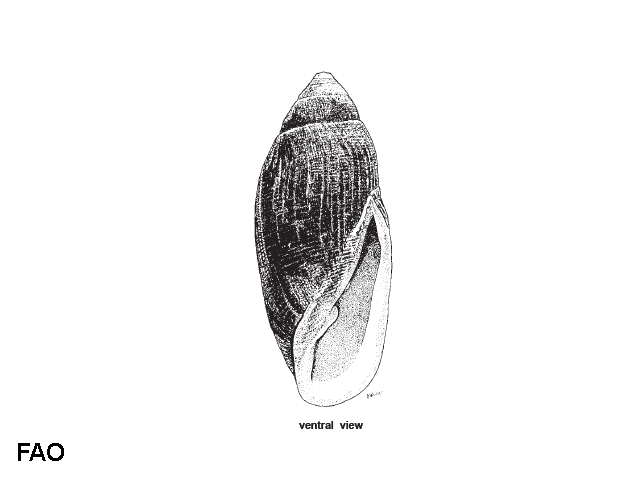| Ellobiidae (cassidula and pythia snails) |
| 6 cm ShH (male/unsexed) |
|
benthic; marine |
| Indo-West Pacific. |
|
Shell medium sized, solid, elongateovate in outline, not shouldered. Spire apex blunt, often corroded in mature specimens. Sculpture of numerous axial grooves and fine spiral lines, causing a finely latticed pattern throughout the surface of shell, though it is somewhat stronger on posterior half of body whorl than on anterior half. Periostracum tough, closely applied to shell. Outer lip of the aperture thick and smooth inside, with a low swelling at about the middle. Inner lip glazed, with 3 folds; posterior fold tooth-like, centre fold oblique, large and angular, anterior fold weak and almost axial in direction. Colour: outside of shell whitish under the dark brown periostracum. Aperture porcelaneous white. |
| Found at mangrove swamps, Nipa palm forests and mud flats near the coast (Ref. 349). An epifaunal deposit feeder (Ref. 129221). |
|
Not Evaluated (N.E.) Ref. 123251)
|
|
|
Source and more info: www.sealifebase.org. For personal, classroom, and other internal use only. Not for publication.

